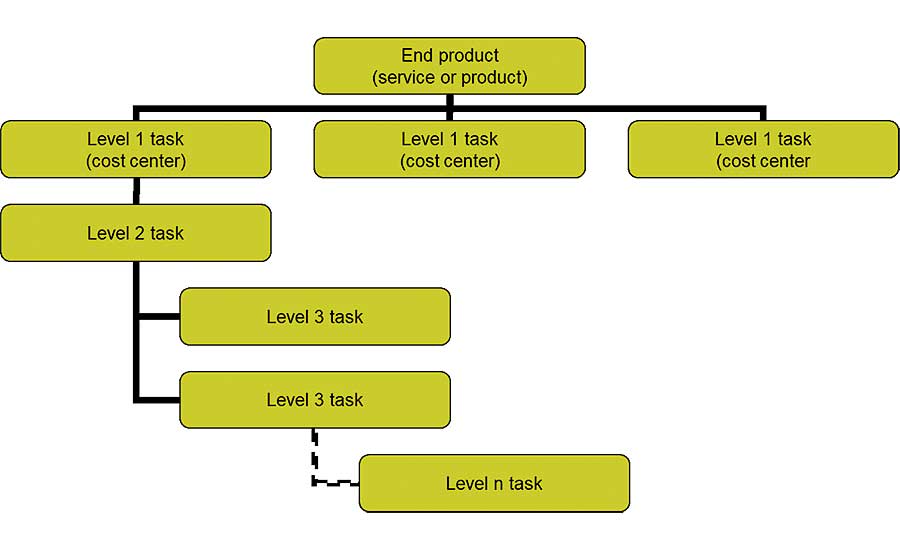What the heck is a WBS?

The fundamental start of any project is a scope of work document, which specifies what we want the project to achieve. The project scope may start out broadly described based upon business objectives, but it will become increasingly detailed over time. Once we have a detailed scope of work, we can produce a work breakdown structure (WBS).
A WBS is a hierarchical disaggregation of a project into small, more readily understood individual packages based upon deliverables. The resulting structure will look like a bill of materials.
Why should we take the time to do this disaggregation? Have you ever worked on a project for some time only to discover that you have missed some key deliverables and tasks connected to the scope? This results in a scramble to discover what can be done to accomplish the missing part of the project at the last minute. Since this last-minute work is unaccounted for in terms of both time and money, the project is delivered late and over budget.
Producing a detailed WBS will require input from multiple departments or cost centers. These cost centers will make a list of what they need to deliver to meet the project scope. Each of those items will include text that describes how everyone will know that an objective has been achieved. This is known as the WBS dictionary.
The WBS connects specific work to the scope of the project, ensuring that only the work required to accomplish the scope is included. This reduces the probability of scope creep (the slow addition of content to the project objectives) or gold plating (making things better than needed even if the customer does not desire it).
The WBS should be developed with the help of multiple team members, ensuring that all skills needed to deliver the project scope are included, as well as identifying who needs to communicate what to whom and when. The act of generating a WBS discovers things. Invariably, you will uncover ideal interactions between cost centers.
The results of the work discovery will provide a foundation upon which we can estimate costs, set schedules and identify resources, risks and talent requirements for the project. Knowing the expected deliverables and who is responsible for them connects the work to estimating activities for duration and costs. It is not up to the project manager to make these estimates, but rather to get this information from those who will actually do the work. In addition, the disaggregation opens areas to consider for risk. In the long run, some of this breakdown will give us clues as to how project items will be put together in the form of schedule.
Finally, the WBS will help when making estimates and executing project activities. Connecting an itemized list to a specific group or department will come in handy when tracking project performance variables, such as time and cost, which are fundamental to earned value management.
For more information on work breakdown structure, check out the WBS Practice Standard from the Project Management Institute, as well as MIL-STD-881C Work Breakdown Structure for Defense Materiel Items. For software to help make a WBS, visit www.wbsplanner.com or www.projectmanager.com.
Looking for a reprint of this article?
From high-res PDFs to custom plaques, order your copy today!





